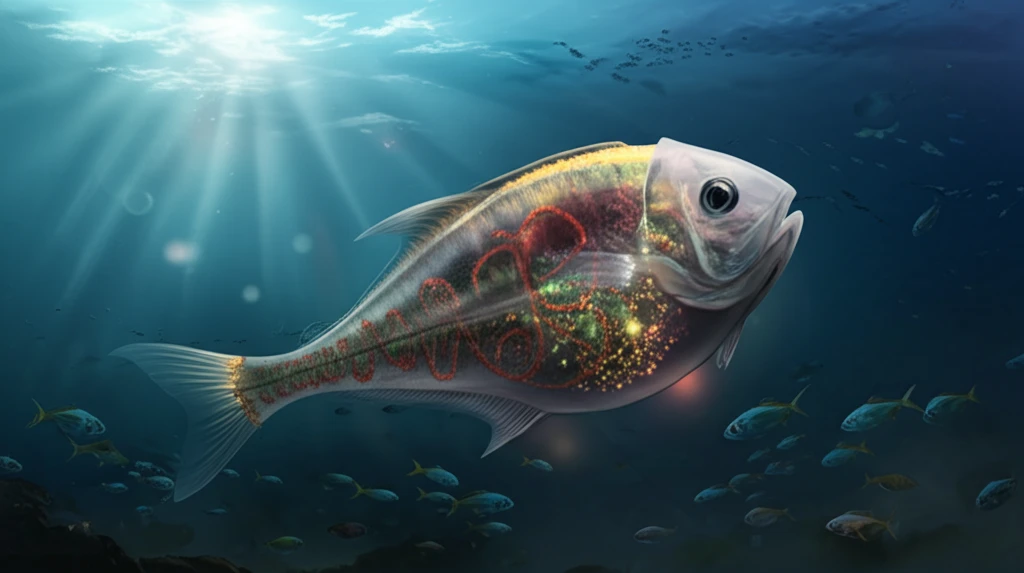
Decoding Fish Development: How R-Spondin 2 Could Revolutionize Aquaculture
"Scientists uncover the crucial role of R-Spondin 2 in muscle development in fish, potentially leading to breakthroughs in fish farming and conservation."
For centuries, fish have sustained populations, provided economic stability, and enriched diets worldwide. As our understanding of fish biology deepens, we unlock new possibilities to improve aquaculture practices, ensure food security, and protect marine ecosystems. Recent research has shed light on the critical role of a protein called R-Spondin 2 (Rspo2) in the muscle development of fish.
R-Spondins are a family of proteins known for their involvement in cell proliferation, cell fate determination, and organ development. Among these, R-Spondin 2 (Rspo2) has garnered attention for its specific functions during embryonic development and muscle maintenance in various species, including humans, mice, and Xenopus (a type of frog).
A new study focuses on the tongue sole Cynoglossus semilaevis, a commercially important flatfish, to explore the function of Rspo2 (CsRspo2) in muscle development. By understanding the role of this key protein, scientists hope to unlock ways to enhance muscle growth in farmed fish, leading to more efficient and sustainable aquaculture practices.
What is R-Spondin 2 and Why Does It Matter for Fish?

R-Spondin 2 (Rspo2) is a secreted protein that plays a vital role in the development of the central nervous system. It is temporarily expressed during development, specifically in the roof plate of the neural tube. The Rspo family comprises four members (Rspo1-Rspo4), which are highly conserved across different species, particularly in vertebrates.
- A signal peptide sequence for secretion.
- Two or more cysteine-rich furin-like (FU) domains.
- A thrombospondin type I repeat (TSR/TSP-1) domain.
- A low-complexity C-terminal region.
The Future of Sustainable Aquaculture
By understanding the molecular mechanisms that regulate muscle development in fish, this research paves the way for optimizing aquaculture practices. The findings suggest that Rspo2 plays a critical role in muscle formation and that manipulating its activity could lead to enhanced muscle growth in farmed fish. Further studies are needed to fully elucidate the role of Rspo2 in regulating Wnt/β-catenin signaling and its essential function during embryonic development.
